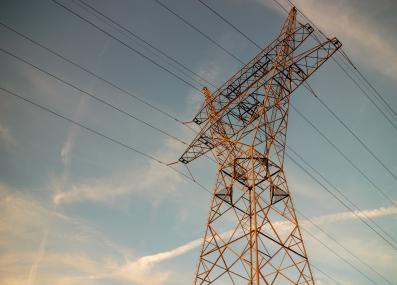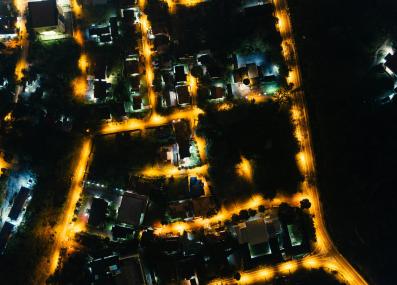New to climate change?
Transmission
The high voltage transmission network is the “highway” that transports electricity from the power plants that generate it, to the homes, businesses and infrastructure that use it. A vast system of cables, transformers, substations, switches and communications equipment, this network keeps our energy system in constant balance. Thanks to our transmission network, when demand for electricity spikes, we can fire up far-flung power plants, letting huge regions rely on a shared electric grid.
Transmission and the shift to clean energy
Our modern energy system is only possible with a large transmission network. A clean energy system that does not contribute to climate change will need an even larger one.
Partly, that’s because we expect to use more electricity for tasks like driving cars and heating homes, which today run largely on climate-warming fossil fuels. And partly, it’s because the fastest-growing clean energy sources are wind and solar farms. These are built where wind, sun and space are abundant, usually far from population centers. To get electricity from the windiest and sunniest areas, we will need more transmission lines spanning wider distances.
The U.S. Department of Energy estimates that, to use 100% clean energy by 2050, the United States’ current transmission capacity will need to more than double.1 This is possible, and would also offer us cheaper electricity. But it demands that we build transmission much faster than we have in the past.
Making the most of today’s grid
The more we can rely on existing transmission lines, the better. “Reconductoring” is the practice of replacing old electrical cables with higher-performing ones. Cables made from materials like carbon fiber can carry much more power than traditional copper and aluminum wire.
Many power lines are also underused. For safety reasons, operators avoid putting more electricity through their lines than the cables can handle in worst-case weather conditions. Real-time weather monitoring, paired with control systems to rapidly switch between lines, would let us safely use our transmission at much closer to full capacity.
Even new transmission lines can be paired with existing infrastructure. Lines can be built along highways, railroads and canals, taking advantage of the right-of-way from these projects and lessening the impact on the landscape. This strategy can offer quicker, cheaper construction, while minimizing concerns about where new power lines are built.
Seeing the big picture
Bigger transmission networks bring more benefits, making the most of every energy source. For this reason, the planning and management of transmission systems would ideally span huge areas and cross many jurisdictions. In Europe, for example, an organization called ENTSO-e coordinates the work of transmission operators in 36 countries, makes continent-wide plans for new transmission projects, and recommends funding for transmission across boundaries.
In the United States, there is no umbrella group to perform all these functions. Instead, seven “regional transmission operators” (RTOs) serve separate areas, and many smaller, utility-run transmission systems fall outside them. In addition, the North American Electric Reliability Corporation sets reliability standards for these system operators.
RTOs rarely cooperate on shared transmission projects. When they do, conflicts can arise: who bears what share of the costs? Which new energy sources should be brought onto the grid first?
Projects that cross RTO boundaries can also have trouble raising money. When an RTO plans its own, internal transmission project, the developer is usually a regulated utility, which can recover its costs by passing them on to electricity customers. By contrast, large, inter-RTO transmission is normally developed as an “independent” or “merchant” project. The developers need to negotiate long-term contracts with electricity shippers and/or customers in order to get funding for construction. This makes them riskier investments, which may lose money if costs are higher or performance lower than expected.
All these planning challenges mean that the biggest transmission projects are the hardest to build. Yet these are often the projects most needed to take full advantage of cheap wind and solar power.
Red tape
Any big construction project can have negative impacts. A new transmission line might cause problems for local landowners, natural habitats, or the energy system. Sensibly, these projects are highly regulated to take these impacts into account.
But for big transmission projects, the regulations are complex, redundant, and hugely time-consuming.
Most projects must get separate permits from federal, state, and local governments. Larger projects may need permits from several states, plus additional agencies responsible for federal and state forests, parks, grazing, and other protected areas. And any group that objects to a transmission project can tie it up at multiple points along the way.
All told, the permitting process can take far longer than the construction. In some cases, projects have waited almost 20 years for final approval to start building. Long delay can kill viable projects altogether, as costs rise and market opportunities pass.
Planning for the grid of the future
These challenges are not so bad when the electric grid is meeting our needs. But today, demand for electricity is rising, and new transmission is needed to carry it. We are also beginning to deal with the extreme and dangerous weather events that come with unchecked climate change. These risks will continue to worsen until the world fully switches from fossil fuels to clean energy, with all its added needs for transmission.
Building more transmission faster would require new ways of doing business. The federal government could be more active in planning, looking at our whole transmission network, choosing the most promising new routes, and encouraging or requiring RTOs to cooperate. The government could also do more to finance new transmission. And permits could be dealt with in a single, shared review with strict time limits.
Without a plan to swiftly grow our transmission network, the transition to clean energy will be harder and more expensive. Whatever electricity we don’t supply with long-distance transmission, we will have to generate locally. The Department of Energy estimates that for every dollar spent on transmission, $1.60 to $1.80 is saved on not building other energy infrastructure: savings that could add up to hundreds of billions of dollars in the coming decades, and cheaper, cleaner electricity for all.1
January 21, 2025.
1 U.S. Department of Energy, Grid Deployment Office: “The National Transmission Planning Study,” 2024.









